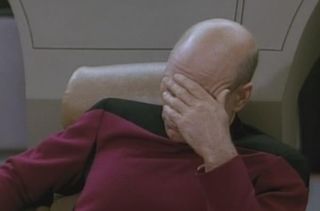Why a Star Trek Warp Drive Would Be Immensely Destructive
Without warp speed, there would have been no Star Trek.

Imagine the Enterprise with a conventional propulsion system and it would have been rather unlikely that the spacecraft's crew would have been able to explore strange new worlds, but would have been limited to travel to Mars and back.
Brendan McMonigal from the University of Sydney published more information on the "Alcubierre Warp Drive", which provided a first reasonable explanation of the warp drive and its feasibility in 1994. According to McMonigal, however, a warp drive-like system is unlikely to be built due to the enormous amount of energy created that would destroy anything in front of the space craft.
Alcubierre theory is based on the idea that "warp" would be achieved by contracting space in front of the craft and expanding space behind it, which would result in a velocity faster than light speed. The explanation is in line with Einstein's theory of relativity, as the spacecraft would not actively move. Instead, the folding space around it would be the reason why it changes its absolute position.
However, the process would also attract particles which would enter the warp bubble surrounding the spacecraft, McMonigal said. Some particles would "obtain extremely high energy and velocity and become time locked for the duration of their time in the bubble, experiencing very little proper time between entering and eventually leaving the bubble." When the spacecraft decelerates, the particles would be blasted away from the craft and change to particles with very short wavelength. According to the researcher, the effect would be a concentrated ray with virtually uncontrollable destructive power. The longer the duration of the warp drive travel, the stronger the released energies, McMonigal said.
The researcher believes that even short trips would collect and release enough energy to destroy anything ahead. He also noted that the particles could be blasted away not just to the front but in any other direction as well.

Sign up to get the BEST of Tom’s Guide direct to your inbox.
Upgrade your life with a daily dose of the biggest tech news, lifestyle hacks and our curated analysis. Be the first to know about cutting-edge gadgets and the hottest deals.
Douglas Perry is an author and journalist from Portland, Oregon. His many articles have appeared in the likes of Tom's Guide, Tom's Hardware, The Oregonian, and several newspapers. He has covered topics including security, hardware, and cars, and has written five books. In his spare time, he enjoys watching The Sopranos.
